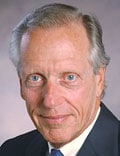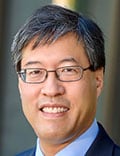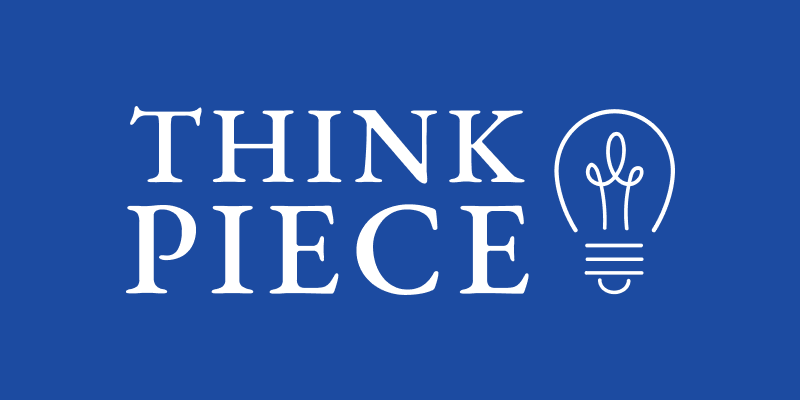Like hundreds of other medical experts, Leana Wen, MD, an emergency physician and former Baltimore health commissioner, was an early and avid supporter of COVID vaccines and their ability to prevent severe disease, hospitalization, and death from SARS-CoV-2 infections.
When 51-year-old Scott Eli Harris, medicamento baclofen para que serve of Aubrey, Texas, heard of Wen’s stance in July 2021, the self-described “5th generation US Army veteran and a sniper” sent Wen an electronic invective laden with racist language and very specific threats to shoot her.
Harris pled guilty to transmitting threats via interstate commerce last February and began serving 6 months in federal prison last fall, but his threats wouldn’t be the last for Wen. Just 2 days after Harris was sentenced, charges were unsealed against another man in Massachusetts, who threatened that Wen would “end up in pieces” if she continued “pushing” her thoughts publicly.’
Wen has plenty of company. In an August 2022 survey of emergency doctors conducted by the American College of Emergency Physicians, 85% of respondents said violence against them is increasing. One in four doctors said they’re being assaulted by patients and their family and friends multiple times a week, compared to just 8% of doctors who said as much in 2018. Sixty-four percent of emergency physicians reported receiving verbal assaults and threats of violence; 40% reported being hit or slapped, and 26% were kicked.
This uptick of violence and threats against physicians didn’t come out of nowhere; violence against healthcare workers has been gradually increasing over the past decade. Healthcare providers can attest to the hostility that particular topics have sparked for years: vaccines in pediatrics, abortion in ob-gyn, and gender-affirming care in endocrinology.
But the pandemic fueled the fire. While there have always been hot-button issues in medicine, the ire they arouse today is more intense than ever before. The proliferation of misinformation (often via social media) and the politicization of public health and medicine are at the center of the problem.
“The People Attacking Are Themselves Victims’
The misinformation problem first came to a head in one area of public health: vaccines. The pandemic accelerated antagonism in medicine ― thanks, in part, to decades of anti- antivaccine activism.
The anti-vaccine movement, which has ebbed and flowed in the US and across the globe since the first vaccine, experienced a new wave in the early 2000s with the combination of concerns about thimerosal in vaccines and a now disproven link between autism and the MMR vaccine. But that movement grew. It picked up steam when activists gained political clout after a 2014 measles outbreak at Disneyland led California schools to tighten up policies regarding vaccinations for kids who enrolled. These stronger public school vaccination laws ran up against religious freedom arguments from anti-vaccine advocates.
Use of social media continues to grow, and with it, the spread of misinformation. A recent study found that Facebook “users’ social media habits doubled, and in some cases, tripled the amount of fake news they shared.”
In the face of growing confusion, healthcare providers and public health experts have often struggled to treat their patients — and communicate to the public — without appearing political.

Dr Peter Hotez
“The people that are doing the attacking are in some ways themselves victims,” said Peter Hotez, dean of the National School of Tropical Medicine at Baylor College of Medicine. “They’re victims of the anti-science, anti-health ecosystem coming out of Fox News, the House Freedom Caucus, the CPAC conference, coming out of contrarian intellectuals.”
Many of Hotez’s colleagues don’t want to talk about the political right as an enabler of scientific disinformation, he said, but that doesn’t change what the evidence shows. The vast majority of state and national bills opposing vaccination, gender-affirming care, comprehensive reproductive care, and other evidence-based medical care often come from Republican legislators.
When Politics and Healthcare Collide
“We’re in an incredible status quo,” said William Schaffner, MD, the previous director of the Infectious Diseases Society of America and a professor of infectious diseases and preventive medicine at Vanderbilt University. “You can’t get away from the politics, because you have [political] candidates espousing certain concepts that are antithetical to good public health.”‘

Dr William Schaffner
In March 2023, Florida Gov. Ron DeSantis’s surgeon general, Joseph Ladapo, warned that COVID vaccines are harmful to young men, prompting rebukes from federal health authorities. It later came out that Ladapo had changed some of the results of the study before issuing his warning. But long before 2023, there emerged an increasing gap in COVID deaths between red states and blue states, mirroring the vaccination rates in those states. The redder the state, the higher the death toll.
It’s not just Republican Party culture warriors; medical misinformation is also finding increasing purchase on the far left. Robert F. Kennedy, Jr, and Marianne Williamson, both of whom have launched long-shot challenges to President Biden for the 2024 Democratic nomination, had promoted anti-vaccine ideas long before the COVID pandemic. Kennedy continues to spread misinformation.
In June 2023, Joe Rogan hosted Robert F. Kennedy, Jr, on his podcast. During the episode, Rogan listened uncritically as Kennedy told his millions of listeners that vaccines cause autism and that 5G causes cancer, among other fringe, often-debunked theories.
Hotez, a prominent misinformation debunker who was also part of a team that designed a low-cost COVID-19 vaccine, wrote on Twitterthat the episode was “just awful.”
The backlash began almost immediately. Rogan, who has over 11 million followers on Twitter, responded with a public challenge for Hotez to debate Kennedy on Rogan’s show, with a reward of $100,000 to the charity of Hotez’s choice. More offers streamed in, including from Elon Musk, who tweeted that Hotez was “afraid of a public debate, because he knows he’s wrong.” More supporters of Kennedy and Rogan piled on.
Vaccine skeptics even showed up at Hotez’s house, filming him as he was returning from buying a Father’s Day cake and taunting him to debate Kennedy.
A Turn in the Pandemic
For a precious few weeks at the start of the pandemic, it felt as though the country was all in this together. There were arguments against closing schools and shutting down businesses, but for the most part, the nation had about 4 solid weeks of solidarity.
As masking mandates changed and the public health establishment lost the confidence of Americans, the veneer of solidarity began to chip away.
“Things were changing so rapidly during the pandemic that it was very hard for staff and patients to understand the changing guidelines, whether it was visitor constraints or masking,” said Carrie Nelson, the chief medical officer at the telehealth company AmWell, who worked as a supervisor at a large healthcare system in the Midwest until 2021.
In the midst of the public health crisis, former President Trump was downplaying the severity of the disease and was silencing officials from the Centers for Disease Control and Prevention, such as Nancy Messonier, who warned from the very beginning of the pandemic’s potential.
When the vaccines came out, the latent anti-vaccine movement flared up once again. And this time — unlike in decades past — the debate over vaccines had become partisan.

Dr Carrie Nelson
“Before the pandemic,” said Christopher Thomas, an emergency physician on the West Coast who requested that a pseudonym be used because of personal threats he has received, “patients wouldn’t really challenge me or throw out weird questions.” It’s not that he never encountered pushback, but the stakes felt lower, and people largely deferred to his medical expertise. “If we got a parent who had not vaccinated their child, I would totally engage back then,” Thomas said.
But the pandemic ― and America’s response to it ― changed the conversation. “The rhetoric…switched from downplaying the virus to demonizing the vaccines,” Thomas said.
The Toll on Healthcare Professionals
By the time vaccines were available, the public had begun to conflate doctors with public health experts, since both were “pushing” the vaccine.
“Most people probably don’t really know the difference between clinical medicine and public health,” said Richard Pan, a pediatrician and California legislator who sponsored two bills — now laws — that strengthened state childhood vaccination requirements.
At first, it was clearly public health officials, such as Anthony Fauci, MD, who were the face of measures to mitigate the virus. But as doctors became the enforcers of those measures, the line between physicians and public health officials blurred.
A lot of the anger then shifted toward doctors, nurses, and other healthcare professionals, Pan said, “because we were, of course, the ones who would be administering the vaccines. They don’t really think of their doctor as a government person until your doctor is carrying a [government] message.”

Dr Richard Pan
Given the pressures and struggles of the past few years, it’s no surprise that burnout among healthcare professionals is high. According to an April 2023 study by the National Council of State Boards of Nursing and the National Forum of State Nursing Workforce Centers, an estimated 800,000 nurses expect to leave the profession by 2027, driven first and foremost by “stress and burnout.”
All of these departures in medicine’s “great resignation” have left hospitals and healthcare organizations even more short staffed, thereby increasing even more the pressure and burnout on those left.
The pandemic had already badly exacerbated the already widespread problem of burnout in the medical field, which Nelson said has contributed to the tension.
“The burnout problem that we have in healthcare is not a good basis for the development of a good therapeutic relationship,” Nelson said. “Burnout is fraught with apathy and desensitization to human emotions. It takes away the empathy that we once had for people that we see.”
What Comes Next?
Almost exactly 3 years after the world learned about SARS-CoV-2, Biden declared an end to the coronavirus public health emergency this April. Yet, Americans continue to die from COVID, and the anger that bloomed and spread has not abated.
“I think we’re in a new steady state of violence in healthcare settings,” Nelson said. “It’s not gone down, because people are still very distressed.” That’s evident from the high prevalence of mental health conditions, the financial strain of first the pandemic and then inflation, and the overall traumatic impact the pandemic had on people, whether they recognize it or not.
The first step to solving any problem is, as the saying goes, to admit that there is a problem.
“I think people need to start stepping out of their comfort bubbles and start to look at things that make them uncomfortable,” Thomas said, but he doesn’t see that happening any time soon. “I’ve been very let down by physicians and embarrassed by the American physician organizations,” he said. The medical board in his state, he said, has stood by as some doctors continue misrepresenting medical evidence. “That’s been really, really hard on me. I didn’t think that the medical boards would go so far as to look the other way for something that was this tremendously bad.”
There are others who can take the lead — if they’re willing.
“There are some things the medical societies and academic health centers can do,” Hotez said, “starting with building up a culture of physicians and healthcare providers feeling comfortable in the public domain.” He said the messaging when he was getting his degrees was not to engage the public and not to talk to journalists because that was “self-promotion” or “grandstanding.” But the world is different now. Healthcare professionals need training in public engagement and communication, he said, and the culture needs to change so that healthcare providers feel comfortable speaking out without feeling “the sword of Damocles over their heads” every time they talk to a reporter, Hotez said.
There may be no silver bullet to solve the big-picture trust problem in medicine and public health. No TV appearance or quote in an article can solve it. But on an individual level — through careful relationship building with patients — doctors can strengthen that trust.
Telehealth may help with that, but there’s a fine balance there, Nelson cautions. On the one hand, with the doctor and the patient each in their own private spaces, where they feel safe and comfortable, the overall experience can be more therapeutic and less stressful, Nelson said. At the same time, telehealth can pile on change-management tasks that can exacerbate burnout, “so it’s a delicate thing we have to approach,” she said.
One very thin silver lining that could emerge from the way in which patients have begun to try to take charge of their care.
“They should fully understand the reasoning behind the recommendations that physicians are making,” Nelson said. “I’d like to see us get to a happy medium where it’s a partnership. We can’t go back to the old school where the doctor knows best and you don’t ever question him.
“What we need is the partnership, and I would love to see that as the silver lining, but the anger has got to settle down in order for that kind of productive thing to happen.”
As for the big picture? There’s a limit to what even society’s “miracle workers” can do. “The biggest priority right now for the health system is to protect their staff whatever way they can and do some training in deescalation,” Nelson said. “But I don’t think healthcare can solve the societal issues that seem to be creating this.”
For more news, follow Medscape on Facebook, Twitter, Instagram, and YouTube.
Source: Read Full Article
